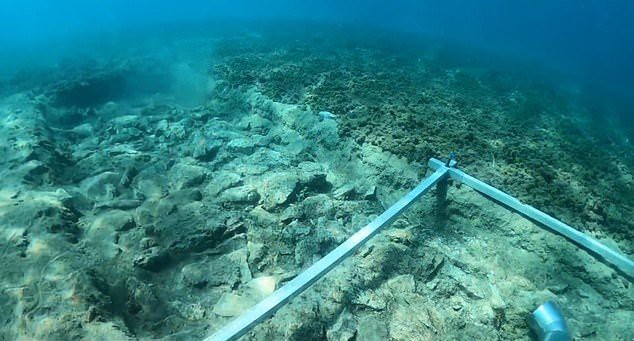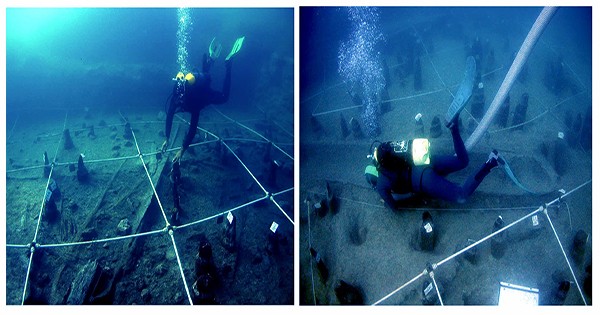Neolithic sailors in the Mediterranean traveled on sophisticated vessels that already had many of the nautical solutions seen on modern boats. The quality and sophistication of these prehistoric vessels suggest that numerous significant advancements in sailing occurred during the late Stone Age, setting the stage for the development of the ancient world’s most prominent civilizations.
It is commonly known that maritime trade relations existed in the Mediterranean during the Neolithic period, but it was unknown until recently how skilled these early mariners were at navigating the waves. To navigate through this uncertainty, the authors of a new study examined five dug-out canoes discovered in a 7,000-year-old hamlet now submerged in an Italian lake.
The location, known as La Marmotta, is submerged beneath 8 meters (26 feet) of water and an additional three meters (10 feet) of sediment, around 300 meters (985 feet) from the current shoreline of Lake Bracciano near Rome. The researchers classify the ancient settlement as the earliest Neolithic lakeside village in the central Mediterranean, dating back to 5700 to 5150 BCE.

The largest of the five canoes discovered at the site was constructed from a massive oak tree and was 10.43 meters (34 feet) long. According to the authors, four “transversal reinforcements” at the vessel’s base “would have increased the durability of the hull and protected it, as well as improving its handling.”
Even more surprisingly, the researchers discovered three T-shaped wooden pieces on the starboard side of the craft, each with several holes. “The characteristics and position of these objects suggest that they might have been used to fasten ropes tied to a possible sail or to join other nautical elements such as a stabilizer or even another boat to create a double hull in the form of a catamaran,” they write in the paper.
“Those strategies would have provided greater safety and stability, and greater capacity for the transport of people, animals, and goods.”
The second boat was fashioned from a hollowed-out alder trunk and had a “mushroom-shaped” piece of wood with a single hole. Noting the similarities between this object and “modern bollards seen in our ports,” the authors “suggest that its function might have been precisely that, to secure the canoe when the water level rose in the lake.”
The remaining three boats were made of alder, poplar, and beech. According to the researchers, the variety of wood kinds employed in the boats demonstrates that the prehistoric builders were well aware of the various qualities of each material.
Oak, for example, may have been chosen for its durability, whereas alder was most likely utilized because it is lightweight and crack-resistant.
“Direct dating of Neolithic canoes from La Marmotta reveals them to be the oldest in the Mediterranean, offering invaluable insights into Neolithic navigation,” the authors of the study stated in a statement. “This study reveals the amazing technological sophistication of early agricultural and pastoral communities, highlighting their woodworking skills and the construction of complex vessels.”
Given the size of the canoes, the researchers believe they were meant for use much beyond Lake Bracciano. They assume that the boats were sailed down the River Arrone, which connects the lake to the Mediterranean Sea, before continuing to faraway regions.
The various exotic items discovered at La Marmotta provide evidence for these outside journeys, including Greek and Baltic ceramics as well as obsidian tools from the Lipari and Palmarola islands. A group of experimental archaeologists confirmed the vessels’ seaworthiness by building a copy of one of the canoes in 1998 and sailing over 800 kilometers (500 miles) from Italy to Portugal.
















